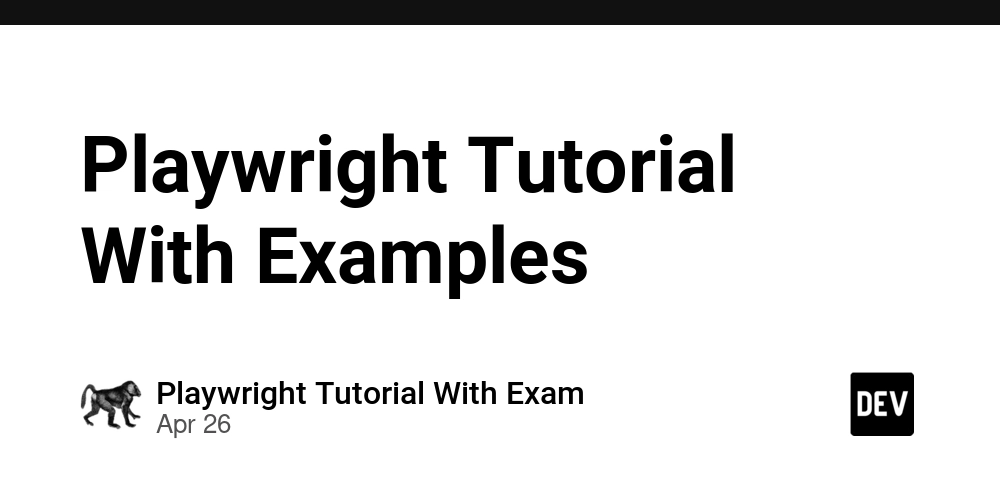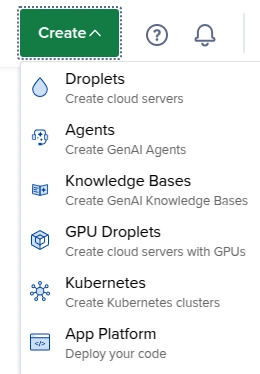Exploring Arbitrum Validator Nodes: Enhancing Ethereum Scalability
Abstract: This post explores Arbitrum validator nodes – the backbone of Ethereum scalability in the Layer‑2 realm. We dive into the background, key features, applications, and limiting factors of these validator nodes. With easy-to-digest explanations, tables, and bullet lists, we highlight how validator nodes enhance transaction speed, reduce gas fees, and support robust network upgrades. In addition, we compare Arbitrum with other Layer‑2 solutions, discuss regulatory and technical issues, and look at future innovations that may transform decentralized ecosystems further. Introduction Blockchains are evolving, and Ethereum continues to lead with significant improvements in scalability. Arbitrum is one of the foremost Layer‑2 solutions that has emerged to address Ethereum’s network congestion and high gas fees. Validator nodes, a core component of Arbitrum’s design, help keep the network secure, efficient, and decentralized. In this post, we delve into Arbitrum validator nodes, explore their impact on Ethereum scalability, and highlight why they are key to the future of decentralized applications (dApps). To gain further technical insight, you can check out the Arbitrum Validator Nodes article on License Token Wiki. Background and Context Ethereum’s exponential growth has given rise to challenges such as network congestion, increased transaction fees, and latency. As a result, Layer‑2 protocols like Arbitrum have emerged to offload computation and provide faster transactions. Arbitrum leverages innovative rollup techniques—particularly optimistic rollups—to bundle multiple transactions and post a condensed summary on the Ethereum mainnet. This mechanism preserves security while greatly enhancing throughput. Historically, the Ethereum community debated scalability solutions. Essential background topics include: Layer‑2 Scaling: Approaches like Optimistic Rollups have emerged to process transactions off-chain before consolidating them on-chain. Learn more about this at Optimistic Rollups Explained. Validator Nodes: They act as trusted entities that verify and settle transactions while ensuring the network’s integrity. Through decentralized validation, blockchain networks build trust without central control. Arbitrum Ecosystem: Arbitrum’s technical documentation, available at Arbitrum's Official Documentation, provides a deep dive into its novel consensus mechanisms and validator network. The ecosystem surrounding Arbitrum is dynamic. Several projects—ranging from NFT marketplaces (like Super Rare on Arbitrum) to community initiatives (like World of Women (WoW) on Arbitrum)—are leveraging these Layer‑2 innovations to foster user engagement and reduce overhead costs. Core Concepts and Features Validator nodes on Arbitrum are specialized network participants tasked with verifying rollup proofs and agreeing on batches of transactions. Let’s break down the core aspects: Key Features of Arbitrum Validator Nodes Decentralization and Security: Validator nodes maintain a fully decentralized environment, ensuring no single actor can compromise the network. Cost Efficiency: By processing many transactions off-chain and verifying them in batches, validator nodes significantly lower gas fees. Interoperability: Arbitrum nodes are designed to work seamlessly with Ethereum’s mainnet, preserving EVM compatibility. Network Upgrades: Validator nodes play a crucial role in implementing upgrades without disrupting network operations. Below is a simplified table outlining core aspects: Aspect Feature Consensus Mechanism Optimistic rollups with fraud proofs ensure secure validation. Transaction Throughput Aggregation reduces on-chain transactions, increasing the overall throughput. Security Decentralized validation minimizes the risk of centralization and single points of failure. Interoperability Full EVM compatibility facilitates seamless integration with Ethereum smart contracts. Cost Efficiency Batch processing significantly lowers gas fees for users. How Validator Nodes Work Batch Processing: Transactions on Ethereum are bundled off-chain on Arbitrum, then verified as a single aggregated proof. Fraud Proofs: In the case of suspicious activity, fraud proofs trigger a dispute resolution mechanism, ensuring validator integrity. Decentralized Consensus: Validator nodes work in tandem to reach consensus, making the process robust and resistant to manipulation. Each of these features contributes to a scalable, low-cost, and secure environment that is ideal for a range of decentralized applications. Applications and Use Cases Arbitrum validator nodes are not just theoretical constructs—they have practical implications across the blockchain ecosystem. Here are several use cases: Decentralized Finance (DeFi): Validator nodes contribute to faster transaction settlements, making financial applications smoother.
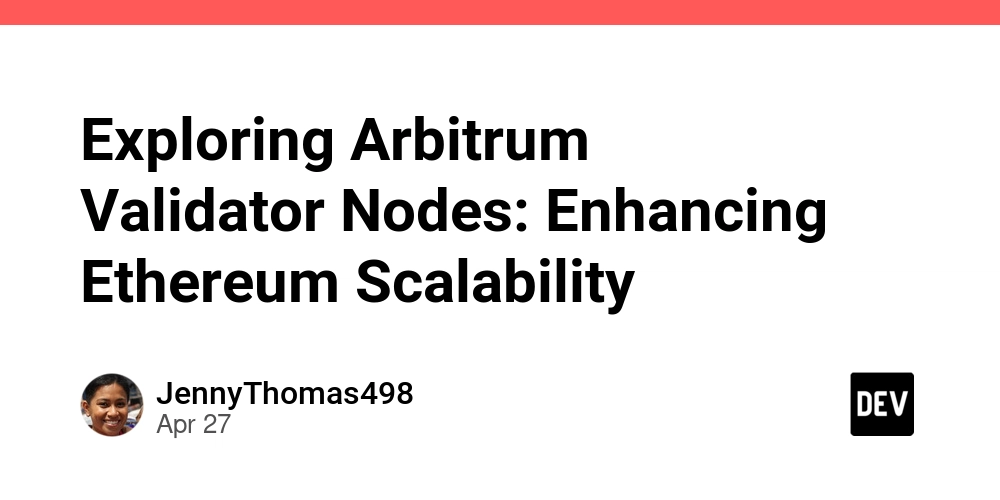
Abstract:
This post explores Arbitrum validator nodes – the backbone of Ethereum scalability in the Layer‑2 realm. We dive into the background, key features, applications, and limiting factors of these validator nodes. With easy-to-digest explanations, tables, and bullet lists, we highlight how validator nodes enhance transaction speed, reduce gas fees, and support robust network upgrades. In addition, we compare Arbitrum with other Layer‑2 solutions, discuss regulatory and technical issues, and look at future innovations that may transform decentralized ecosystems further.
Introduction
Blockchains are evolving, and Ethereum continues to lead with significant improvements in scalability. Arbitrum is one of the foremost Layer‑2 solutions that has emerged to address Ethereum’s network congestion and high gas fees. Validator nodes, a core component of Arbitrum’s design, help keep the network secure, efficient, and decentralized. In this post, we delve into Arbitrum validator nodes, explore their impact on Ethereum scalability, and highlight why they are key to the future of decentralized applications (dApps).
To gain further technical insight, you can check out the Arbitrum Validator Nodes article on License Token Wiki.
Background and Context
Ethereum’s exponential growth has given rise to challenges such as network congestion, increased transaction fees, and latency. As a result, Layer‑2 protocols like Arbitrum have emerged to offload computation and provide faster transactions. Arbitrum leverages innovative rollup techniques—particularly optimistic rollups—to bundle multiple transactions and post a condensed summary on the Ethereum mainnet. This mechanism preserves security while greatly enhancing throughput.
Historically, the Ethereum community debated scalability solutions. Essential background topics include:
- Layer‑2 Scaling: Approaches like Optimistic Rollups have emerged to process transactions off-chain before consolidating them on-chain. Learn more about this at Optimistic Rollups Explained.
- Validator Nodes: They act as trusted entities that verify and settle transactions while ensuring the network’s integrity. Through decentralized validation, blockchain networks build trust without central control.
- Arbitrum Ecosystem: Arbitrum’s technical documentation, available at Arbitrum's Official Documentation, provides a deep dive into its novel consensus mechanisms and validator network.
The ecosystem surrounding Arbitrum is dynamic. Several projects—ranging from NFT marketplaces (like Super Rare on Arbitrum) to community initiatives (like World of Women (WoW) on Arbitrum)—are leveraging these Layer‑2 innovations to foster user engagement and reduce overhead costs.
Core Concepts and Features
Validator nodes on Arbitrum are specialized network participants tasked with verifying rollup proofs and agreeing on batches of transactions. Let’s break down the core aspects:
Key Features of Arbitrum Validator Nodes
- Decentralization and Security: Validator nodes maintain a fully decentralized environment, ensuring no single actor can compromise the network.
- Cost Efficiency: By processing many transactions off-chain and verifying them in batches, validator nodes significantly lower gas fees.
- Interoperability: Arbitrum nodes are designed to work seamlessly with Ethereum’s mainnet, preserving EVM compatibility.
- Network Upgrades: Validator nodes play a crucial role in implementing upgrades without disrupting network operations.
Below is a simplified table outlining core aspects:
| Aspect | Feature |
|---|---|
| Consensus Mechanism | Optimistic rollups with fraud proofs ensure secure validation. |
| Transaction Throughput | Aggregation reduces on-chain transactions, increasing the overall throughput. |
| Security | Decentralized validation minimizes the risk of centralization and single points of failure. |
| Interoperability | Full EVM compatibility facilitates seamless integration with Ethereum smart contracts. |
| Cost Efficiency | Batch processing significantly lowers gas fees for users. |
How Validator Nodes Work
- Batch Processing: Transactions on Ethereum are bundled off-chain on Arbitrum, then verified as a single aggregated proof.
- Fraud Proofs: In the case of suspicious activity, fraud proofs trigger a dispute resolution mechanism, ensuring validator integrity.
- Decentralized Consensus: Validator nodes work in tandem to reach consensus, making the process robust and resistant to manipulation.
Each of these features contributes to a scalable, low-cost, and secure environment that is ideal for a range of decentralized applications.
Applications and Use Cases
Arbitrum validator nodes are not just theoretical constructs—they have practical implications across the blockchain ecosystem. Here are several use cases:
- Decentralized Finance (DeFi): Validator nodes contribute to faster transaction settlements, making financial applications smoother. For instance, many DeFi protocols have integrated Arbitrum to reduce transaction fees and enhance liquidity. Explore more insights on this topic in the Arbitrum and De-Fi Yield article.
- NFT Transactions and Gaming: The NFT space benefits immensely from lower transaction fees on Layer‑2 solutions. Platforms such as Super Rare on Arbitrum highlight how validator nodes can accelerate and secure digital art transactions. Similarly, decentralized gaming projects find that reduced latency improves the user experience dramatically.
- Interoperability Projects: Validator nodes help bridge different blockchains. This interoperability is critical when projects require smooth transactions between Ethereum and other blockchain networks. For example, projects exploring Ethereum's Interoperability underscore how Layer‑2 improvements can lead to a more connected digital asset ecosystem.
In addition to these, the upcoming integration of community governance models may further leverage validator node mechanisms for on-chain decision-making.
Key benefits for developers include:
- Lower operational costs due to reduced gas fees.
- Enhanced network throughput allowing for more complex decentralized applications.
- Improved user experience by mitigating delays and system congestion.
Challenges and Limitations
Despite its potential, Arbitrum validator nodes face several challenges:
- Technical Complexity: Implementing batch validation and fraud proofs requires advanced infrastructure and strong developer expertise.
- Adoption Barriers: Many traditional Ethereum users are cautious about migrating to Layer‑2 solutions, slowing broader adoption.
- Regulatory Scrutiny: As observed in discussions like Arbitrum and Regulatory Challenges, evolving regulatory frameworks may introduce uncertainties in decentralized finance.
- Interoperability Risks: Though interoperability is a key selling point, bridging different protocols introduces risks such as data consistency and potential security loopholes.
- Network Upgrades: While validator nodes facilitate smoother upgrades, coordinating decentralized improvements remains a challenging aspect for many blockchain initiatives.
From a technical perspective, frequent updates and open-source contributions (as discussed in Arbitrum and Open Source License Compatibility) are crucial to keeping validator nodes robust against potential threats.
Additional challenges include:
- Scalability bottlenecks if too many transactions lead to validator overload.
- Security vulnerabilities if nodes are poorly managed or if there are gaps in the fraud-resistant architecture.
Addressing these challenges will require continuous developer collaboration and strategic upgrades to maintain the trust and efficiency of the network.
Future Outlook and Innovations
The future looks promising for Arbitrum and its validator nodes. As projects evolve and improvements are continually made, we anticipate several key trends:
- Increased Adoption: With more developers and institutions adopting Layer‑2 solutions, validator nodes will likely gain prominence by fostering a more scalable and secure network environment. Trends discussed in Arbitrum One vs. Arbitrum Nova: Comparative Analysis and Future Insights highlight the competitive dynamics within Layer‑2 ecosystems.
- Advanced Incentive Mechanisms: Enhanced reward systems—like staking and yield mechanisms—are being explored to incentivize validator node participation further. These improvements aim to balance rewards, security, and operational efficiency.
- Integration with DeFi and NFT Markets: As decentralized finance continues to grow, innovations in validator node functionality will directly impact transaction speeds and overall network liquidity across competitive markets.
- Stronger Interoperability: Future updates will likely focus on enhanced cross-chain communication protocols that make validator nodes even more integral to linking diverse blockchain networks.
- Enhanced Security Measures: With advancements in zero-knowledge proofs and further enhancements to fraud-proof systems, validator nodes will continue to push the boundaries of blockchain security.
These innovations are paving the way for a future where decentralized networks become ever more resilient and adaptive. As more projects move towards decentralized governance and open-source collaboration, the continuous work on validator nodes will significantly impact the scalability and security of blockchain systems.
Additional Resources and Related Links
For readers eager to deepen their knowledge, please consider these valuable resources:
- Arbitrum Official Documentation: Offchain Labs Developer Portal
- Optimistic Rollups Explained: Ethereum Official Documentation
- Layer‑2 Scaling Debate: Cointelegraph on Layer‑2 Solutions
Additionally, check out these highly relevant references from License Token:
From Dev.to, consider these insightful posts:
- Arbitrum and Regulatory Challenges
- Arbitrum and Open Source License Compatibility
- Arbitrum One vs. Arbitrum Nova: Comparative Analysis and Future Insights
Summary
Validator nodes on Arbitrum are pivotal in driving Ethereum scalability by verifying off-chain transactions via optimistic rollups. They significantly reduce gas fees, increase throughput, and ensure a decentralized validation process—a true game-changer in the blockchain space. Yet, challenges such as technical complexity, adoption hurdles, and regulatory uncertainties persist.
In this post, we provided a thorough overview—from the historical context and fundamental features to practical applications, challenges, and future innovations. With continuous improvements and open-source contributions, validator nodes will remain at the core of scaling Ethereum beyond its current limitations.
By understanding and leveraging these validator nodes, developers, businesses, and communities can collectively push the boundaries of decentralized applications. As blockchain technology evolves, keeping abreast of these innovations will be crucial for sustaining an efficient, secure, and scalable ecosystem.
Arbitrum validator nodes not only represent a technical solution but also signify a strategic leap toward a more accessible blockchain future. Embracing these innovations could pave the way for the next generation of dApps and decentralized financial systems, giving users the reliability and speed modern applications demand.
Whether you are a developer, a blockchain enthusiast, or simply curious about the future of decentralized finance, Arbitrum validator nodes offer a fascinating glimpse into the evolving landscape of blockchain scalability. Stay tuned for more updates as the community continues to innovate and push the limits of what is possible in the decentralized world.































































































































































![[The AI Show Episode 143]: ChatGPT Revenue Surge, New AGI Timelines, Amazon’s AI Agent, Claude for Education, Model Context Protocol & LLMs Pass the Turing Test](https://www.marketingaiinstitute.com/hubfs/ep%20143%20cover.png)













































































































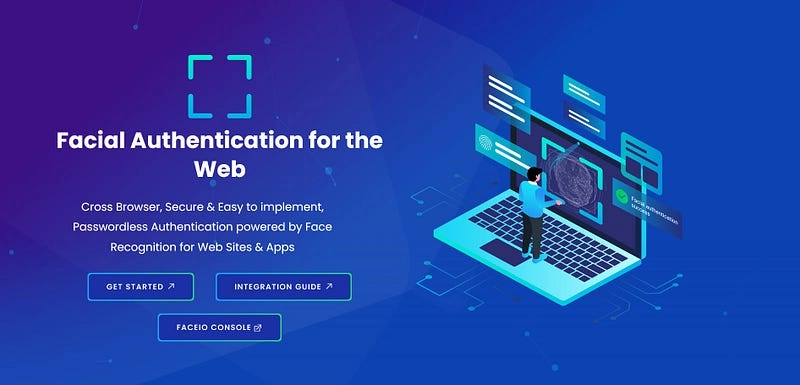

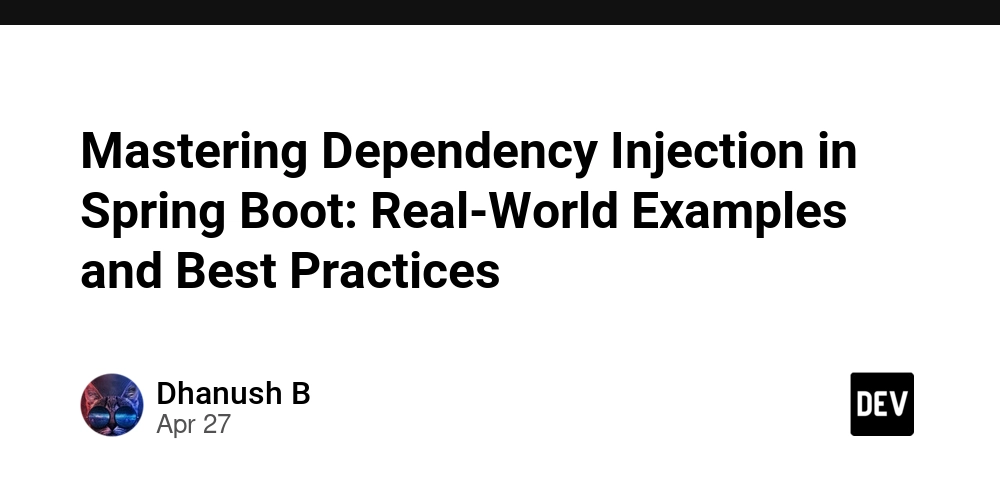











![[DEALS] Koofr Cloud Storage: Lifetime Subscription (1TB) (80% off) & Other Deals Up To 98% Off – Offers End Soon!](https://www.javacodegeeks.com/wp-content/uploads/2012/12/jcg-logo.jpg)
























![Is this too much for a modular monolith system? [closed]](https://i.sstatic.net/pYL1nsfg.png)




















































































































_roibu_Alamy.jpg?width=1280&auto=webp&quality=80&disable=upscale#)




 CISO’s Core Focus.webp?#)








































































































![Apple Smart Glasses Not Close to Being Ready as Meta Targets 2025 [Gurman]](https://www.iclarified.com/images/news/97139/97139/97139-640.jpg)
![iPadOS 19 May Introduce Menu Bar, iOS 19 to Support External Displays [Rumor]](https://www.iclarified.com/images/news/97137/97137/97137-640.jpg)

![Apple Drops New Immersive Adventure Episode for Vision Pro: 'Hill Climb' [Video]](https://www.iclarified.com/images/news/97133/97133/97133-640.jpg)


































































































